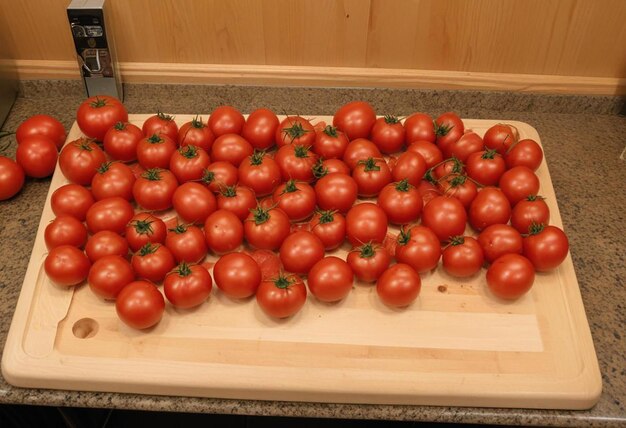How Long Can Tomatoes Stay Fresh in the Refrigerator?
Tomatoes are a staple in many kitchens, beloved for their versatility and vibrant flavor. However, when it comes to keeping them fresh, opinions and practices vary widely. If you've ever found yourself staring at a basket of tomatoes wondering whether to refrigerate them or not, you’re not alone. Let’s explore the ins and outs of storing tomatoes, particularly in the refrigerator, to ensure they last as long as possible while maintaining their taste and nutritional value.
🍅 Understanding Tomato Storage: The Refrigerator Dilemma
The Natural Shelf Life of Tomatoes
Tomatoes are unique due to their sensitivity to temperature and their ripening process, which is influenced by ethylene gas. Left at room temperature, tomatoes continue to ripen, becoming sweeter and softer with time. However, once they reach optimal ripeness, their lifespan quickly diminishes.
Refrigerator Storage: Pros and Cons
Pros:
- Slows Down Ripening: Refrigeration can halt or slow down the ripening process, extending the life of tomatoes that are already ripe.
- Preserves Nutrients: Certain nutrients remain stable when tomatoes are refrigerated, providing freshness for longer.
- Prevents Over-Ripening: Ideal for tomatoes reaching the peak of perfection, refrigeration prevents them from quickly becoming overly ripe.
Cons:
- Flavor Loss: Cooler temperatures can dull the delicate flavors, leading to a less robust taste.
- Texture Changes: Refrigeration can alter the texture, sometimes resulting in mealy or mushy tomatoes.
Quick Tips for Storing Tomatoes in the Refrigerator
- Check Ripeness: Store only thoroughly ripened tomatoes in the fridge.
- Use a Crisper Drawer: This helps moderate humidity and temperature, keeping tomatoes fresher.
- Airtight Containers: If you’ve cut a tomato open, place it in an airtight container before refrigerating.
🍽️ Tomato Storage Best Practices
When to Refrigerate Your Tomatoes
Fully Ripe Tomatoes: Once your tomatoes display a vibrant red hue and feel slightly soft (but not mushy), they can be refrigerated to extend their usability.
Partially Cut Tomatoes: If you’ve started using a tomato but haven’t finished it, refrigerate the uneaten portion in a sealed container to maintain freshness.
Daily Maintenance
Check them daily for any signs of spoilage. Remove any tomatoes that show signs of decay to prevent it from spreading to others.
Beyond Refrigeration: Alternative Storage Methods
Room Temperature: The Ideal Short-term Solution
- For Unripe Tomatoes: Keep them at room temperature, away from direct sunlight. Use a breathable basket or bowl to allow airflow.
- For Ripening Control: If you wish to slow down the ripening slightly but not arrest it completely, consider storing tomatoes stem-side down on a cool countertop.
Freezing: For Long-term Storage
- Great for Sauces and Soups: Frozen tomatoes won’t slice well later but work wonderfully as a base for stews and soups.
- Preparation: Blanch them before freezing to preserve some of the texture and flavor.
📋 Consumer-Friendly Summary: Maximizing Tomato Life 🍅
Here’s a quick checklist to help you manage your tomato storage effectively:
- 🥶 Refrigeration: Use the fridge only for fully ripe or cut tomatoes to extend their life for up to a week.
- 🌡️ Room Temperature: Ideal for unripe tomatoes or those you’ll use within a couple of days.
- 🔪 Cut Tomatoes: Cover and store in an airtight container if placed in the fridge.
- ⏳ Regular Check: Inspect for spoilage frequently to avoid waste.
Practical Applications and Uses of Stored Tomatoes
When you’ve maximized your tomato’s shelf life through strategic storage, the possibilities in your kitchen are endless.
Culinary Inspirations
- Salads and Sandwiches: Fresh room-temperature tomatoes offer the best texture for cold dishes.
- Cooking and Sauces: Refrigerated or previously frozen tomatoes are brilliant for cooking due to their enhanced sweetness when slightly cooked.
- Snacks and Appetizers: Quartered fresh tomatoes drizzled with olive oil and herbs make a simple yet elegant appetizer.
Preserving Flavor
Even if refrigeration is necessary, try to bring your tomatoes back to room temperature before using them raw. This can help revive some of the flavors dulled by the cold.
Expert Tips for Maximum Freshness
- Tomato Type Matters: Know that different types of tomatoes may have slightly different storage needs. Cherry and grape tomatoes, for example, tend to hold up well even with refrigeration.
- Environmental Considerations: Keep your kitchen naturally airy. Controlling humidity and temperature can greatly affect how well tomatoes ripen.
Conclusion: The Balanced Tomato Storage Strategy
Tomato storage is all about balance and understanding your needs. While refrigeration can extend the shelf life of your ripe tomatoes, it's essential to consider the impact on flavor and texture. By combining different storage strategies—using the refrigerator wisely, managing room temperature storage, and even leveraging freezing when necessary—you can enjoy fresh, flavorful tomatoes in your meals no matter the season.
This balanced approach ensures you not only reduce waste but also maintain the beloved taste of one of nature's most versatile fruits. With these insights and practical tips, you’re now well-equipped to make the most of your tomatoes, keeping them delicious and fresh, longer. 🍅
